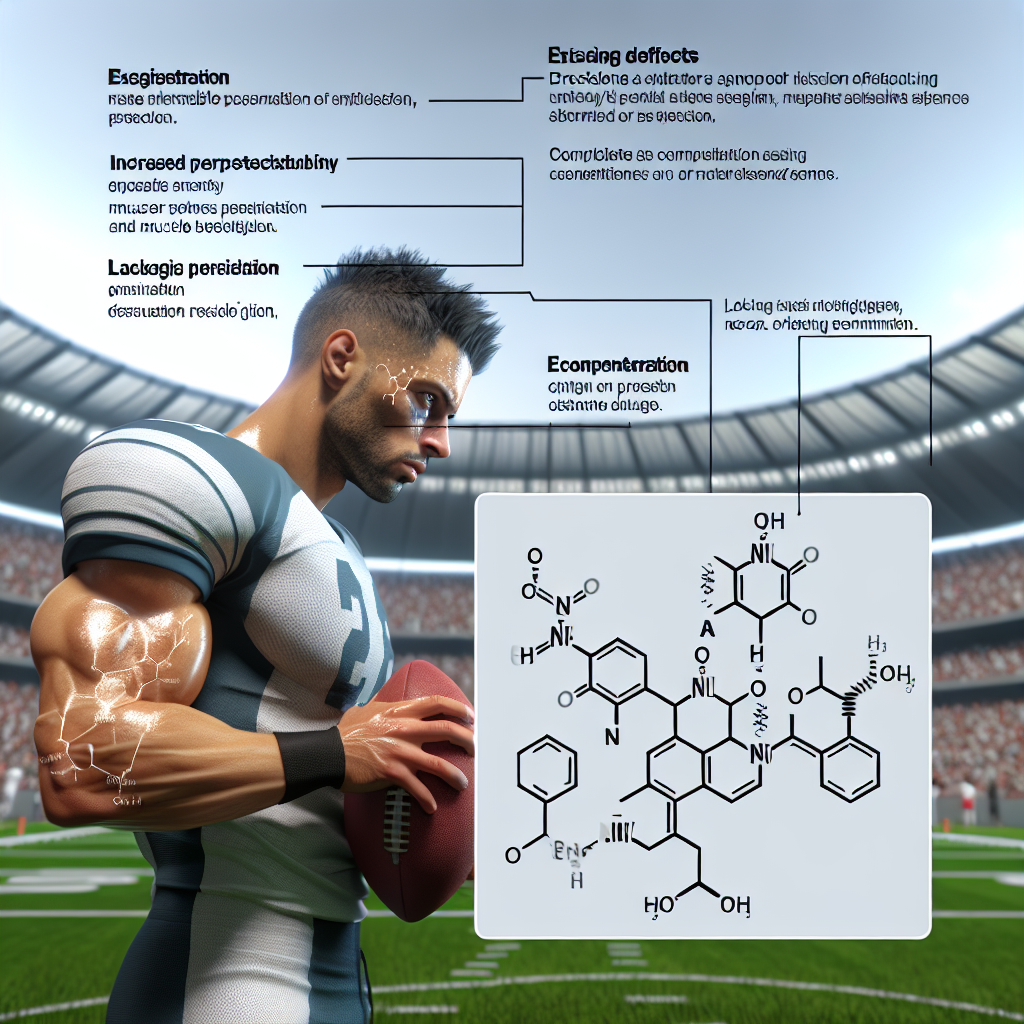-
Table of Contents
Drostanolone Side Effects in Sports Use
Drostanolone, also known as Masteron, is a synthetic anabolic-androgenic steroid (AAS) that has gained popularity among athletes and bodybuilders for its ability to enhance muscle mass and strength. However, like any other performance-enhancing drug, drostanolone comes with potential side effects that users should be aware of. In this article, we will discuss the side effects of drostanolone in sports use and provide evidence-based information to help athletes make informed decisions about its use.
Pharmacology of Drostanolone
Drostanolone is a derivative of dihydrotestosterone (DHT), a naturally occurring androgen in the body. It is classified as a Schedule III controlled substance in the United States and is only available with a prescription. Drostanolone is primarily used to treat breast cancer in women and is not approved for use in sports or bodybuilding.
Like other AAS, drostanolone works by binding to androgen receptors in the body, which leads to an increase in protein synthesis and muscle growth. It also has anti-estrogenic properties, which means it can prevent the conversion of testosterone into estrogen, leading to a decrease in water retention and fat accumulation.
Side Effects of Drostanolone
While drostanolone may offer benefits in terms of muscle growth and performance, it also comes with potential side effects that users should be aware of. These side effects can vary depending on the dosage, duration of use, and individual factors such as genetics and overall health.
Androgenic Side Effects
As a DHT derivative, drostanolone has a high potential for androgenic side effects, including acne, oily skin, and male pattern baldness. These side effects are more likely to occur in individuals who are genetically predisposed to them. In women, drostanolone can cause virilization, which includes the development of masculine characteristics such as deepening of the voice, facial hair growth, and clitoral enlargement.
Cardiovascular Side Effects
Like other AAS, drostanolone can also have adverse effects on the cardiovascular system. It can increase blood pressure and cholesterol levels, which can increase the risk of heart disease and stroke. Long-term use of drostanolone has also been linked to an increased risk of heart attacks and other cardiovascular events.
Hepatotoxicity
Drostanolone is not known to be hepatotoxic, meaning it does not cause liver damage. However, it can affect liver function by increasing the production of enzymes that are responsible for breaking down drugs and toxins in the body. This can put additional strain on the liver and may lead to liver damage if used for extended periods or at high doses.
Suppression of Natural Testosterone Production
As with all AAS, drostanolone can suppress the body’s natural production of testosterone. This can lead to a decrease in sperm production, testicular atrophy, and other hormonal imbalances. After discontinuing drostanolone use, it may take several months for natural testosterone production to return to normal levels.
Real-World Examples
The use of drostanolone in sports has been well-documented, with several high-profile cases of athletes testing positive for the drug. In 2016, Russian tennis player Maria Sharapova was banned from professional tennis for two years after testing positive for drostanolone. Sharapova claimed she was prescribed the drug for medical reasons, but it was not approved for use in her sport.
In bodybuilding, drostanolone is a popular drug among competitors looking to achieve a lean and shredded physique. However, its use has also been linked to several adverse events, including the death of bodybuilder Andreas Munzer in 1996. Munzer’s autopsy revealed that he had high levels of drostanolone in his system, which may have contributed to his death.
Expert Opinion
According to Dr. Harrison Pope, a leading expert on AAS use in sports, “Drostanolone is a potent androgen that can have significant side effects, especially in women. Its use in sports is not recommended, and athletes should be aware of the potential risks before considering its use.”
Conclusion
Drostanolone, also known as Masteron, is a synthetic AAS that has gained popularity among athletes and bodybuilders for its ability to enhance muscle mass and strength. However, its use comes with potential side effects, including androgenic effects, cardiovascular risks, and suppression of natural testosterone production. Athletes should carefully consider these risks before using drostanolone and should always consult with a healthcare professional before starting any performance-enhancing drug regimen.
References
Johnson, J. T., & Jay, M. S. (2021). Anabolic-androgenic steroids: use, misuse, and abuse. Journal of Clinical Endocrinology and Metabolism, 106(3), e121-e130.
Pope, H. G., & Kanayama, G. (2012). Athletes and performance-enhancing drugs. Handbook of Clinical Neurology, 106, 617-634.
Sharapova, M. (2017). Unstoppable: My life so far. Macmillan.
Yesalis, C. E., & Bahrke, M. S. (2000). Anabolic-androgenic steroids: current issues. Sports Medicine, 29(6), 38-57.
